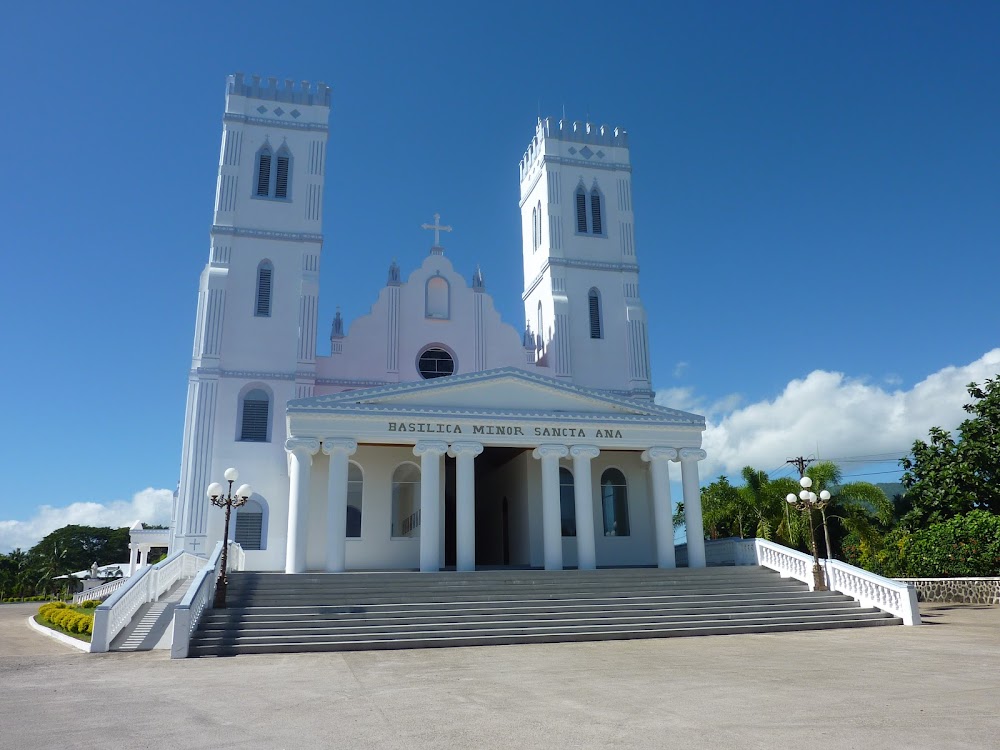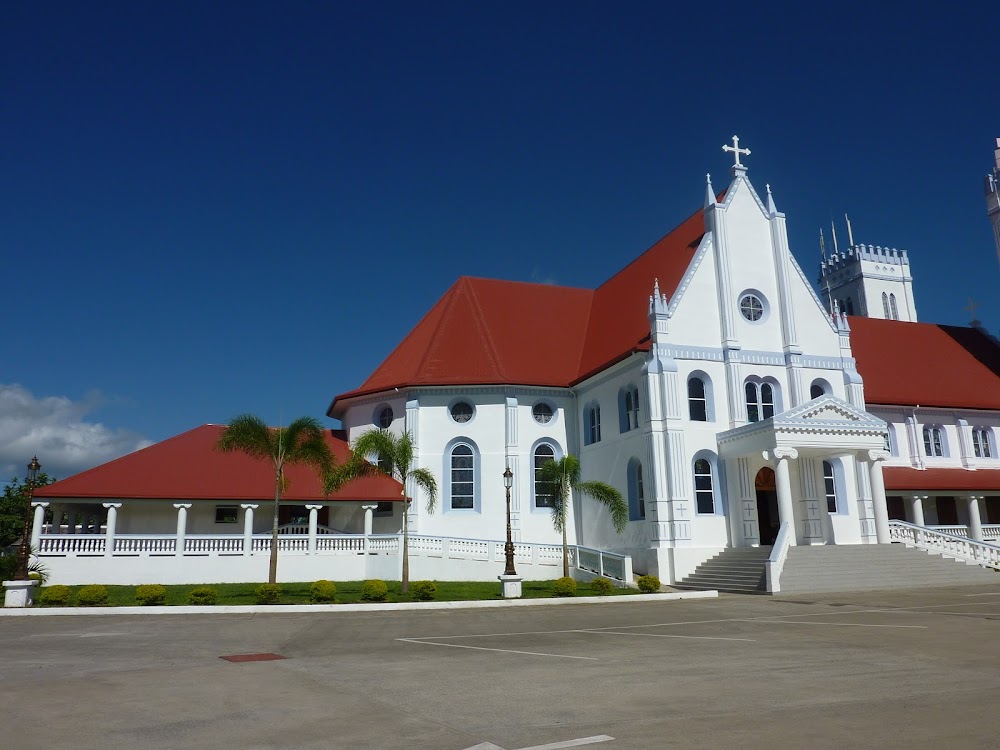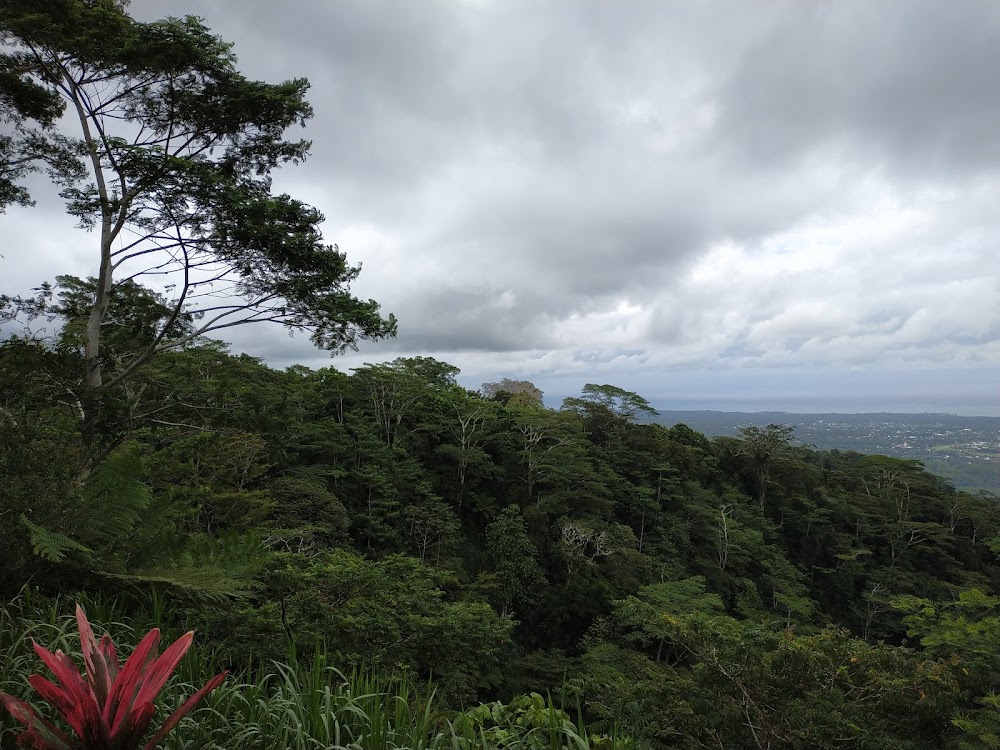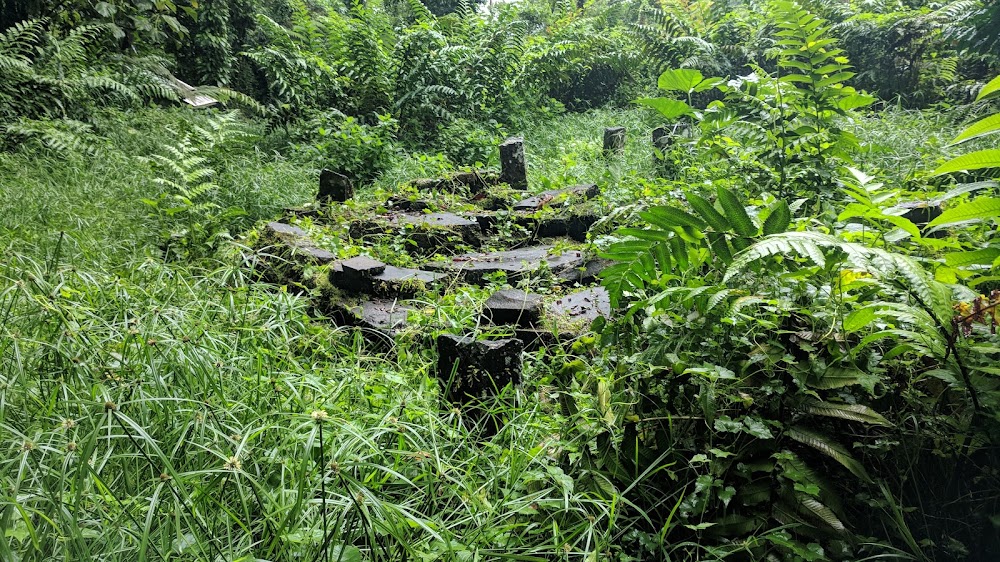Leulumoega Cathedral (Katedrali o Leulumoega)
Overview
In the heart of the South Pacific, on the island of Upolu in Samoa, lies the majestic Basilica of Saint Anne, also known as Leulumoega Cathedral. Nestled in the tranquil town of Leulumoega, this sacred edifice serves as a vibrant symbol of faith, community, and culture, drawing both visitors and worshippers from near and far.
The history of the Basilica of Saint Anne dates back to the late 19th century, when European missionaries arrived in Samoa with the mission of spreading Christianity. The local communities, including Leulumoega, embraced this new faith, leading to the establishment of smaller chapels and churches. This growing need for a central place of worship ultimately set the stage for the cathedral’s construction.
The decision to build the Basilica of Saint Anne arose from the aspirations of the burgeoning Catholic community for a grand house of worship. Planning and design efforts commenced in the early 20th century, engaging local and foreign artisans to create a structure that would not only reflect their faith but also celebrate Samoan heritage.
Construction of the cathedral unfolded over several years, completed in stages with meticulous attention to detail. The foundation was laid in the early 1900s, with durable materials chosen to withstand the island's tropical climate. Local coral limestone, hand-carved by skilled artisans, provided the cathedral with its striking and unique appearance.
Architecturally, the Basilica of Saint Anne beautifully blends traditional Samoan elements with Gothic influences. Characterized by tall, pointed arches and intricate stained glass windows, the Gothic style harmonizes with thatched roofing and exquisite wooden carvings that pay homage to Samoan craftsmanship.
Inside the cathedral, visitors are greeted by an awe-inspiring nave featuring high ceilings and rows of wooden pews that can accommodate hundreds of worshippers. The main altar, carved from local timber, is adorned with religious iconography and flanked by statues of saints. Sunlight filtering through the stained glass windows casts a mesmerizing array of colors on the polished stone floor, creating a serene and uplifting atmosphere.
Named after Saint Anne, the mother of the Virgin Mary and the patron saint of mothers and women in labor, the basilica holds a special place in the community’s heart. A statue of Saint Anne, prominently displayed near the altar, becomes a focal point of veneration, often surrounded by flowers and candles lovingly placed by parishioners.
While the cathedral’s construction was a remarkable collective effort, its ongoing maintenance and restoration have been crucial in preserving its glory. The local community and church administration have worked tirelessly to uphold the cathedral's beauty, undertaking several restoration projects to reinforce its structure against the ravages of tropical storms and natural wear.
Beyond being a place of worship, the Basilica of Saint Anne serves as a cultural hub, hosting numerous religious festivals, including the grand feast of Saint Anne. These vibrant events feature traditional Samoan dances, hymns, and communal feasts, drawing participants from all over the island and beyond.
In recent years, the Basilica of Saint Anne has also emerged as a popular tourist destination, attracting visitors with its architectural beauty and historical significance. Guided tours provide insights into the cathedral’s rich history and the pivotal role it plays within the local community.
Today, the Basilica of Saint Anne stands as a beacon of faith and a testament to the rich cultural heritage of Leulumoega and Samoa. It remains a cherished gathering place where individuals come to celebrate, reflect, and find solace, upheld by the enduring spirit of the community that built and maintains it. The cathedral’s legacy is one of unity, artistry, and unwavering devotion, capturing the very essence of Samoa's spiritual and cultural landscape.






